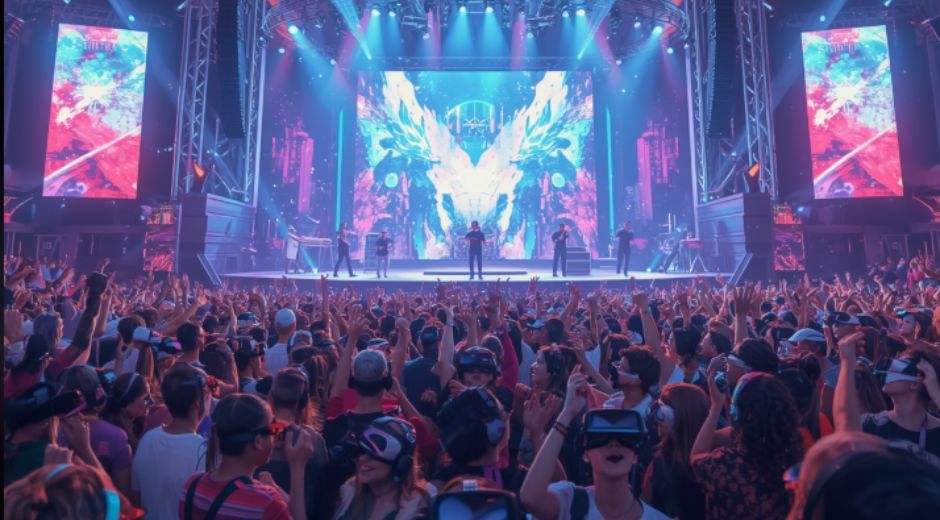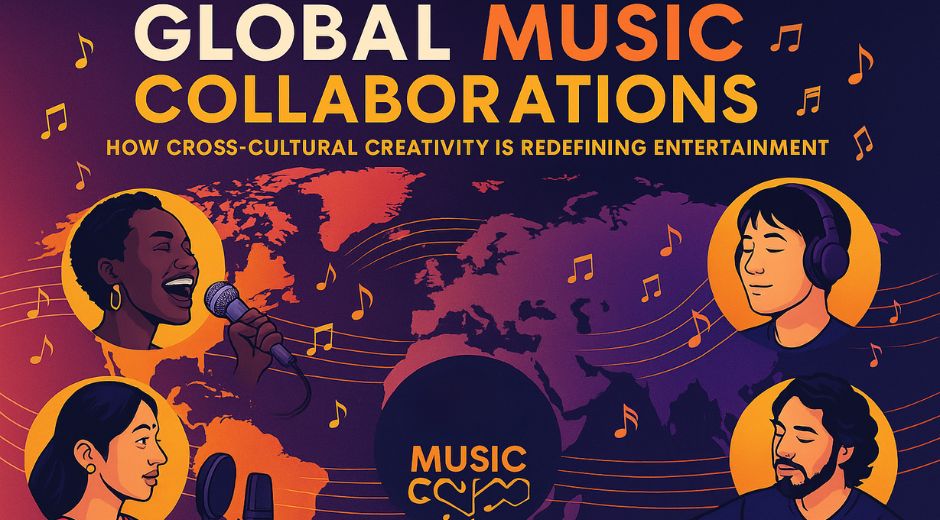Immersive Theater: Redefining How Audiences Experience Storytelling
Art has always evolved with technology and culture, but in the last decade, one powerful movement has blurred the line between performer and spectator: Immersive Theater. Unlike traditional productions where audiences sit quietly in rows, Immersive Theater invites them to step directly into the story. They can explore rooms, interact with characters, and influence how the narrative unfolds.
This new art form has become a global sensation, transforming storytelling into a sensory, emotional, and participatory experience. From experimental spaces in London to cutting-edge performances in New York, Immersive Theater is redefining entertainment and offering a glimpse into the future of creative engagement.
The Origins of Immersive Theater
Although the concept feels distinctly modern, the roots of Immersive Theater stretch back to the early 20th century. Avant-garde artists began breaking away from stage conventions, exploring how to dissolve the barrier between audience and performer. One of the earliest examples was Antonin Artaud’s “Theater of Cruelty,” which sought to awaken audiences through total sensory involvement.
However, it was not until the late 1990s and early 2000s that Immersive Theater truly emerged as a defined movement. Productions like Sleep No More by Punchdrunk in London and New York gave the format a global spotlight. Audience members wandered freely through a sprawling, cinematic set, discovering fragments of storylines through movement, whispers, and encounters.
The idea was radical: instead of observing art, people live inside it.
What Makes Immersive Theater Different
The essence of Immersive Theater lies in its interactivity. Unlike traditional performances that unfold on a stage, immersive productions take place in real locations — warehouses, mansions, basements, or even entire neighborhoods. Every corner hides a clue, every object a symbol, every actor a potential guide.
In this environment, spectators become participants. They might find themselves in a candlelit room holding a handwritten letter, sharing a secret with an actor, or choosing between doors that lead to completely different storylines. No two audience experiences are ever the same.
This spontaneity transforms the spectator into a collaborator, erasing the distance that once defined theater.
The Role of Technology in Immersive Storytelling
In recent years, technology has deepened the experience of Immersive Theater. Virtual reality (VR), augmented reality (AR), and projection mapping allow creators to design digital layers on top of physical performances. Audiences can walk through digital dreamscapes while still feeling grounded in real space.
For example, the production Ghost Light blended AR headsets with live actors, merging real and virtual worlds seamlessly. Meanwhile, sound designers now use binaural recording to create 360-degree audio environments that immerse participants completely.
According to Variety, the fusion of digital and physical storytelling in Immersive Theater represents one of the most exciting artistic frontiers of the decade, influencing cinema, gaming, and education alike.
The Emotional Power of Participation
The success of Immersive Theater lies not only in its technology or aesthetics but in its emotional impact. By allowing audiences to interact with the story, the experience becomes deeply personal. Participants don’t just watch emotions — they feel them firsthand.
Imagine being part of a story where your decisions determine whether a character finds redemption or despair. Such experiences blur the boundaries between fiction and reality, prompting profound emotional engagement.
Psychologists studying immersive experiences suggest that they enhance empathy and memory retention. When audiences are active participants, they form genuine emotional connections with the characters and themes.
The Rise of Global Immersive Productions
Immersive Theater is no longer limited to underground art movements. Major cultural centers and entertainment companies are investing heavily in the format. London’s Secret Cinema brings beloved films like Blade Runner and Stranger Things to life, recreating entire worlds where fans can explore and interact before watching the movie unfold.
In Las Vegas, The Sphere integrates sound, light, and architecture into a massive multisensory space. Meanwhile, New York continues to lead with productions like Then She Fell and Sleep No More, where every performance feels like an entirely new discovery.
Even theme parks have adopted immersive storytelling principles. Disney’s Galaxy’s Edge transforms visitors into residents of a living Star Wars universe, complete with missions, hidden characters, and interactive choices.
Immersive Theater and the Human Senses
Every sense plays a role in Immersive Theater. The smell of perfume in a room, the feel of velvet curtains, the sound of whispers in the dark — all become part of the story. By engaging multiple senses simultaneously, immersive creators trigger emotional memories and create profound immersion.
Scent, for instance, is a particularly powerful storytelling tool. It can evoke nostalgia or tension instantly. Likewise, soundscapes built from layers of real and artificial noises create an invisible architecture around the audience, guiding their emotions and choices.
Light design also becomes a narrative element, signaling transitions, moods, or even moral states. Instead of separating design from storytelling, Immersive Theater merges them completely.
The Influence on Cinema and Television
The growth of Immersive Theater has spilled into other creative industries. Filmmakers and streaming platforms are exploring new ways to give audiences control over stories. Interactive films like Black Mirror: Bandersnatch let viewers make choices that affect the plot, echoing the principles of immersive storytelling.
Similarly, video games have embraced cinematic narratives that mirror theatrical immersion. Productions like The Last of Us and Detroit: Become Human employ performance capture and branching storylines to create emotional depth and moral complexity.
As the lines blur between cinema, theater, and gaming, a new form of hybrid entertainment emerges — one that values experience as much as story.
Community and Collective Experience
Despite the technological sophistication, Immersive Theater remains rooted in human connection. It brings people together in shared spaces, encouraging collaboration, conversation, and collective exploration.
Audiences often describe these performances as transformative. Strangers become allies as they uncover clues or navigate mysterious environments together. The shared sense of discovery fosters community in ways traditional performances rarely do.
In many ways, Immersive Theater reclaims the ancient communal function of art — to unite people through shared emotion and experience.
The Economics of Immersive Productions
Producing Immersive Theater is both challenging and expensive. Unlike traditional shows that reuse a stage and fixed seating, immersive productions must build entire worlds. Every prop, costume, and sound must feel authentic.
However, the potential rewards are immense. The uniqueness of the experience drives ticket demand and loyalty. Audiences often return multiple times to explore alternate paths or endings. This repeat engagement has turned Immersive Theater into a sustainable business model for creative entrepreneurs.
Major investors and cultural institutions are now backing immersive venues, seeing them as the future of experiential entertainment.
Challenges in the Immersive Format
While its growth is remarkable, Immersive Theater also faces challenges. Maintaining narrative consistency while giving audiences freedom requires careful design. There is always a balance between guiding and allowing exploration.
Another concern involves accessibility. Some experiences rely on physical interaction or complex spaces that may exclude certain participants. Ensuring inclusivity and comfort for all audiences remains a critical conversation among creators.
Moreover, the psychological impact of extreme realism must be handled responsibly. When audiences cannot easily distinguish fiction from reality, emotional intensity can become overwhelming.
The Future of Immersive Theater
Looking ahead, the next phase of Immersive Theater may merge physical spaces with fully digital environments. Virtual performances will allow global audiences to explore the same world simultaneously from different locations.
Imagine entering a live show in New York while another participant in Tokyo experiences the same narrative through VR. Real-time interaction could connect these audiences, creating a shared yet remote community.
Artificial intelligence may also play a role, generating adaptive storylines that respond to each participant’s behavior. This would make every show a living organism, evolving with its audience.
According to BioNatureVista , emerging companies are already experimenting with neural feedback devices that adjust lighting, sound, or pacing based on a participant’s emotional responses. The result is theater that literally reacts to your heartbeat.
The Academic Perspective
Universities are increasingly studying Immersive Theater as both an art form and a psychological phenomenon. Scholars explore how it reshapes empathy, memory, and human interaction. Some research even suggests that immersive performance can be used for education and therapy.
For instance, medical schools have begun using immersive role-play scenarios to train doctors in communication and empathy. Similarly, museums employ immersive design to help visitors emotionally connect with history and culture.
This fusion of art, science, and learning underscores the universal potential of Immersive Theater as more than entertainment it is an evolving language of experience.
The Cultural Impact
The rise of Immersive Theater reflects a broader cultural shift. In an age of screens and digital distraction, people crave real, tactile experiences. Immersive performances offer something modern life rarely provides: presence.
Participants step out of their everyday identities and into stories that engage their senses, emotions, and imagination. This sense of being “inside the moment” counters the passivity of traditional media.
At Newspapersio.com, we have observed how cultural engagement increasingly favors participation over observation. People want to feel part of something larger, to co-create meaning rather than consume it. Immersive Theater provides exactly that.
Conclusion: A New Dimension of Storytelling
Immersive Theater represents a turning point in artistic evolution. It combines the ancient power of live performance with modern innovation, creating a space where reality and imagination coexist.
By transforming audiences into participants, it redefines what it means to experience a story. Every touch, sound, and choice becomes part of the narrative, reminding us that art is not something to watch it is something to live.
As technology continues to evolve, the boundaries of Immersive Theater will expand even further, connecting people across continents and cultures. Whether in a physical room or a virtual world, one truth remains constant: storytelling is most powerful when we step inside it.
The Pulse of Sport

Economic Blocs: How Regional Alliances Are Redefining Global Power
Economic Blocs: How Regional Alliances Are Redefining Global Power examines how nations unite through trade and policy to shape the world economy.

Blue Zones: Unlocking the Secrets of Longevity and Purposeful Living
Blue Zones: Unlocking the Secrets of Longevity and Purposeful Living explores how specific communities thrive through balance, purpose, and healthy habits.

Soundscapes: How Sonic Design Shapes Emotion and Immersion in Modern Culture
Soundscapes: How Sonic Design Shapes Emotion and Immersion in Modern Culture explores how music, noise, and silence influence perception and creativity.

Edge Intelligence: The Next Frontier of Smarter, Faster, and Decentralized Computing
Edge Intelligence: The Next Frontier of Smarter, Faster, and Decentralized Computing explores how AI and edge systems redefine real-time data processing.

Sanctions and Global Power: How Economic Pressure Shapes Modern Diplomacy
Sanctions and Global Power: How Economic Pressure Shapes Modern Diplomacy explores how nations use trade, finance, and policy to influence global decisions.

Circadian Rhythm: How Your Body’s Internal Clock Shapes Health and Performance
Circadian Rhythm: How Your Body’s Internal Clock Shapes Health and Performance explores how daily cycles influence sleep, energy, mood, and longevity.

Immersive Theater: Redefining How Audiences Experience Storytelling
Immersive Theater: Redefining How Audiences Experience Storytelling explores how interactive performance reshapes art, emotion, and audience connection.

Digital Twins: How Virtual Replicas Are Powering Real-World Innovation
Digital Twins: How Virtual Replicas Are Powering Real-World Innovation explores how this technology reshapes industries from healthcare to aviation.













